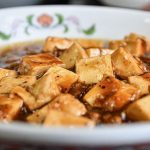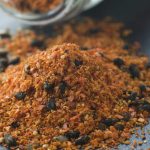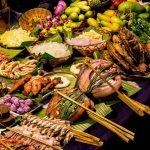Edamame: what it is, how to cook it, and its properties.

How are edamame cooked?
The truth is that the preparation of edamame is really simple: the green soybean pods are harvested before they ripen and the ends of the pods are cut off before boiling. Cooking can be done in a bain-marie or steaming, adding salt during the process or once the pods are cooked. Although some people eat it freshly boiled, edamame is most often served cold with soy sauce and ginger.
Read more
Taiyaki: what it is, its origins and varieties

It has been a long time since the cuisine of the East made its way to the West. Since then, we have not stopped adopting typical dishes from Asian cuisine: pad thai, noodles, dim sums, pokes… the list goes on. However, relatively recently, a new dish has arrived from Japan that has revolutionised the world of desserts. Do you want to know what it is? Well, we’re talking about taiyaki, a traditional Japanese sweet in the shape of a fish that has more than a century of history.
What is taiyaki?
Taiyaki is a Japanese fish-shaped cake traditionally filled with red azuki bean paste, although nowadays you can find an infinite number of different fillings. It has a similar texture to a waffle and is also prepared in a similar way, cooking the dough in metal moulds that close on themselves and, when opened, give rise to this small Japanese delicacy.
But the big question is… Among so many ways to choose, why a fish? Well, you should know that this Japanese cake was not originally shaped like a fish, but the original mould was round. However, the change of mould was due to the fact that in Japan the tai, a type of sea bream, was an emblematic fish that was only eaten on special occasions. It was considered the king of fish, especially during the Edo period (1603-1867), when it was often presented to the shogun or feudal lord as a gift. In order to allow more people to eat sea bream, the shape of the mould was changed to that of sea bream, so that a larger section of the population could enjoy it, even if only in this version. Now you can understand where the word taiyaki comes from: tai means “sea bream” and yaki means “baked/baked”.
Origin
To know the history of taiyaki, we need to go back about 100 years to a neighbourhood in Tokyo. Seijiro Kanbei, originally from Osaka, moved to Tokyo to try his luck in business with a stall selling “Imagawayaki”, popular sweets at the time. However, when he saw that his stall was not doing as well as he had hoped, he began to think about turning things around. How? Kanbei came up with the idea of giving his imagawayaki a different shape, namely the shape of the little fish “Tai”.
Today, Seijiro Kanbei’s original shop, “Naniwaya Sohonten”, still exists. If you have a real sweet tooth and go to Japan, this shop is a must.
List of varieties
It makes sense that after more than a century, the recipe for taiyaki has been innovated. Although the original filling was sweet bean paste, you can now find taiyaki filled with ice cream, fruit, creams, matcha or jams. Here are the most common options you will find at the fish stalls:
- Traditional anko-filled taiyaki. Initially, these sweets were not filled, but over time they began to be filled with sweet azuki paste known as anko. This paste is well known for being the filling par excellence of another classic Japanese sweet, dorayaki, Doraemon’s favourite pastry.
- Taiyaki with flavoured dough. As with the filling, it is also possible to experiment with the dough. The simplest and most common way is to add chocolate to the dough, thus adding a special touch either by eating it on its own or by filling it with another ingredient.
- Salted Taiyaki. If you fancy trying taiyaki but are not a big fan of sweet things, there are also options for you. Sobrasada, frankfurter, ham, cheese… these are just some of the savoury fillings you can use to accompany your taiyaki. What’s more, the sweetness of the dough combined with the savoury toppings inside will create a contrast and a fusion of flavours that you’ll love.
- Taiyaki filled with ice cream. After several years of being eaten in the traditional way, New York came up with the novel concept of eating it with ice cream, a format that soon became popular internationally. In addition, it is usually possible to add toppings to the ice cream, which makes them even more irresistible and photogenic to post on social networks.
A basic: Japanese knives
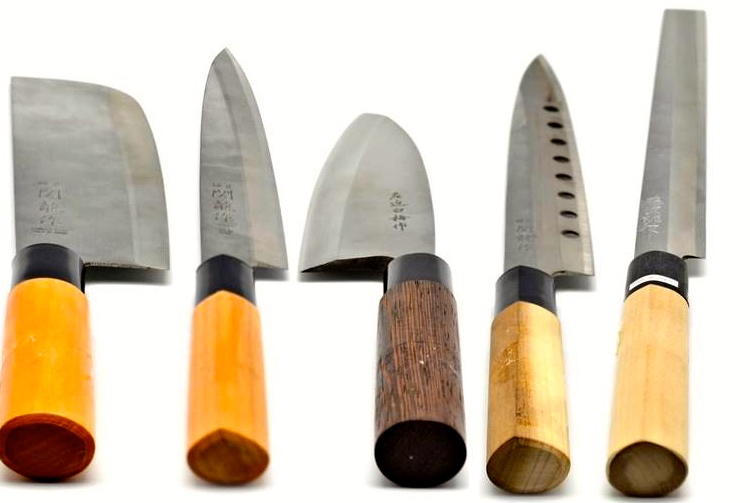
When it’s time to start cooking, at Oriental Market we always have our Japanese knives at hand, a high-end selection already used by the best professionals of this particular cuisine in Spain. Although we must bear in mind that Japanese food requires a master technique and many years of experience, for all beginners and professionals it is important to know the characteristics of the main types of Japanese knives and what each of them is used for. Here we explain it to you:
[imacPrestashop_categorias categoria=”149″ cant_productos=”3″ ]In Oriental Market we have a wide collection of professional knives that meet the requirements of haute cuisine. A Japanese knife that has its origins in the history of the traditional single-edged sword, the vast majority of which are made from steel:
- Sashimi knife: also known as Yanagiba knife, it is a specific utensil for the preparation of sashimi. It is notable for cutting to the desired size and filleting the fish or meat in a single movement, thanks mainly to its thin blade in the shape of a willow or katana. A Japanese design knife ideal for cutting raw fish, with a clean and precise cut. In our shop you will find it in various sizes: 21 cm sashimi knife or 33 cm sashimi knife.
- Nakiri knife: this is also a Japanese design knife, but it is different in that it is specialised in cutting vegetables. It stands out for its great lightness and its shape (similar to a machete), as well as for being sharp on both sides. A common knife that can also be found in the domestic sphere, easy to use and quick to cut. It is very similar to the Deba and Usuba models. In our shop you will find it in 31 cm format.
- Deba knife: a Japanese knife for cutting, boning and filleting fish, but also for cutting meat and small bones. Similar in design to the Nakiri knife but heavier and with a thicker blade. It includes a sharp edge on one side. In our shop you will find it in different formats and designs: 13.5 cm deba knife, 16.5 cm silver design deba knife or the traditional fukumoto model.
- Santoku knife: the “all-rounder” of Japanese kitchen knives. A multifunctional knife for everyday use that can be used for cutting meat, fish or vegetables. In our shop you will find various models of this type of knife: 18 cm santoku, 16.5 cm santoku or our 16.5 cm designer santoku.
Don’t forget the special knives for cutting duck, such as our 31 cm knife, and don’t forget to sharpen them!
Discover why our shop has been chosen as the best Japanese shop in Barcelona by BARCELONA.COOL website.
Mung beans = Green soybeans

It is known as Green Soya, although it has nothing to do with soya, or as Mung Bean. Have you heard of it? It is a legume that you will probably see more frequently in many Western diets and menus. A healthy food that stands out for being one of the richest in protein, do you want to know more about it?
The Green Soya or Mung Bean was first cultivated in India a little over 5,000 years ago. It is a food that grows in warm regions and one of the most famous dishes where this bean is the real protagonist is the Dahl (green soya mixed with rice porridge – kanji-). You can find this ingredient in Oriental Market‘s online shop. A healthy product that stands out for its multiple nutritional benefits: as well as being a food rich in protein, as we have already mentioned, it is an excellent source of carbohydrates, fibre and minerals. It is particularly rich in magnesium (ideal for bones, muscles and the nervous system), iron (key to the immune system) and phosphorus (to nourish the bones and play a part in energy production). It also incorporates B vitamins such as B1, B3 and B6.
One of the latest recipes that we at Oriental Market have prepared with this ingredient is the Cream of Mung and Vegetable Soup that we were able to prepare in the first oriental cooking workshop that we held last February with leading food bloggers. An easy-to-prepare dish that especially delighted the little ones, so we can conclude that the mung bean is one of the vegetables that will surely not be resisted by the youngest members of the household. In our shop, in addition to the traditional green soya beans, you can also find green soya beans without skin.
To cook them, bear in mind: the green soya or mung bean is an excellent ingredient for slow and prolonged cooking, such as stews and casseroles, properly spiced and accompanied by a good proportion of vegetables or cereals. Before cooking, do not forget to soak them for a few hours (do not overdo it as they soften quickly). Rinse, drain and cook!
Kit for making sushi at home
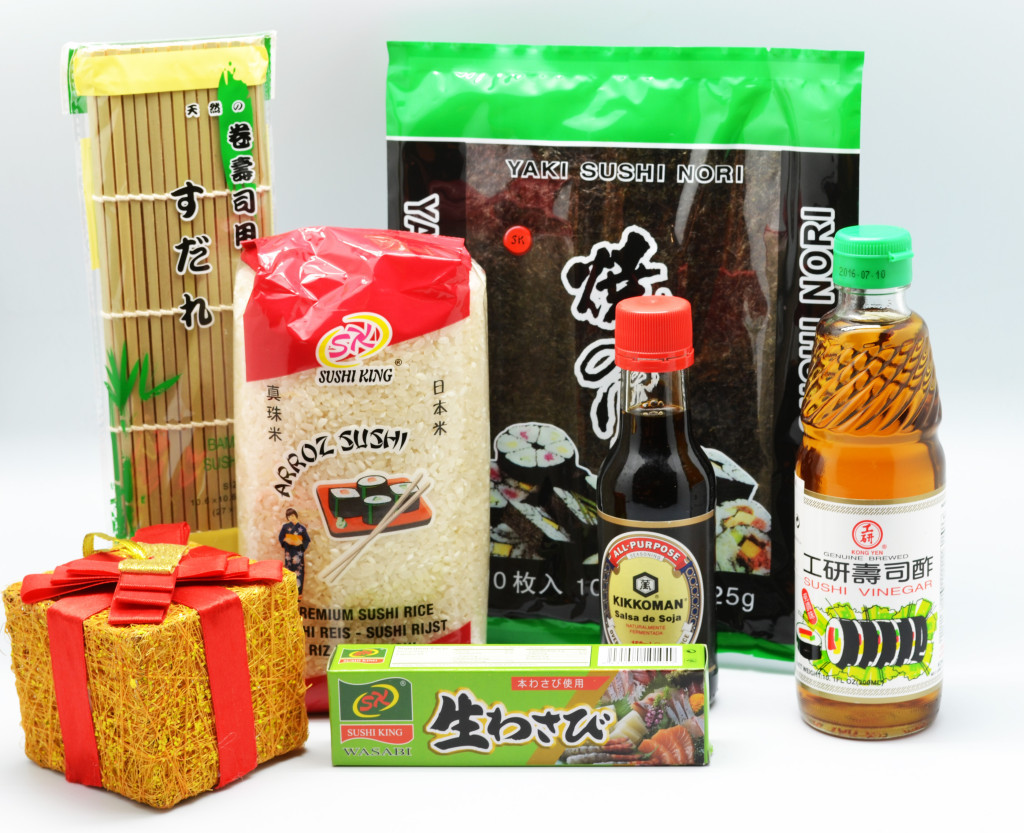
Sushi is sought after, desired and praised by all. The authentic sushi, the one that allows us to delight ourselves with the authentic oriental flavours in every bite and that many of us have been able to enjoy in the best restaurants in our country… why not do it now at home and in the best of company? From Oriental Market, experts in oriental food, we have found the perfect solution for you, which consists of fabulous sushi kits with all the essential ingredients for its preparation. What do you think?
[imacPrestashop_productos productos=”4133″ idioma=”1″]
The sushi kit includes all the necessary ingredients that will be used to prepare your recipe in an easier way, and also some small utensils that you will undoubtedly need if you want to achieve a perfect result. The kit includes: 10 sheets of Nori seaweed, Sushi rice (not just any rice), Soya Sauce (one of the best, from the brand Kikkoman), Japanese vinegar, Wasabi in a tube (you can’t miss that spicy touch to the recipe) and of course, a fabulous mat with which you can shape the sushi (we also have plastic ones).
Ingredients and products that you can buy in our online shop to make sushi:
[imacPrestashop_productos productos=”173,3133,2079,4238,2785,4614,4612,731,4407,1439,4323,4194″ idioma=”1″]How to make homemade Japanese sushi and cook the rice.
If you are a beginner in oriental cooking, we suggest this video de Isasaweis by Isasaweis, which includes most of the ingredients that we bring you in this sushi kit. And with practice… you will surely be able to surprise us with your recipes!
Remember: in addition to the ingredients, at Oriental Market you can also find all the necessary utensils for its preparation.
Japanese cuisine toppings

If there is one dish par excellence in Japanese cuisine with the largest number of followers worldwide, it is undoubtedly sushi. Nowadays in Spain, there are many lovers of this gastronomy who go to the best restaurants in our country to try different varieties of sushi, and there are also many who are increasingly encouraged to prepare it at home. The ingredients? White rice or Japanese sumeshi rice, which is usually sweet and short-grained; nori seaweed, rice vinegar, sugar and salt for the seasoning, and rice wine or mirin (sake).
But if there is one ingredient that allows you to create a wide range of sushi varieties, it is the topping. In Oriental Market we have a wide range of toppings that can be used for the preparation of sushi, some of the most outstanding are the following:
- Salmon topping: in our shop, we have trays of laminated salmon (20 units per tray), with an excellent pink colour and of the highest quality. Salmon is one of the star toppings for sushi and also for sashimi, the brother of sushi and which in many gastronomic spaces usually go hand in hand.
- Chicharro topping: the chicharro, horse mackerel or bunting is a type of blue fish that is ideal for the preparation of sushi. A fish that in Western culture is usually prepared fried, but in Japanese cuisine it is presented as a topping for this type of recipe. In our shop, the horse mackerel can be found in trays of 8 sliced pieces.
- Cuttlefish in slices: an excellent option for the preparation of this type of recipe (sushi or sashimi) is the use of cuttlefish, offering a different flavour to traditional toppings, and at Oriental Market we have trays of sliced cuttlefish (25 units).
And it doesn’t end here, in our shop you will find other varieties of toppings such as sillago, sliced tilapia, prawns or even sliced octopus, among others. How do you see it? Do you dare to surprise your guests with homemade sushi or sashimi? Come and visit our shop. The staff will help you choose all the ingredients you need to prepare first class recipes.
YUZU: Japan’s citrus fruit

It looks like a lemon, but it’s not. It looks like a lime, but it isn’t. Maybe a mandarin? but it isn’t. It’s called Yuzu, and it’s a citrus fruit from the Orient. A ‘new’ food for many that has been making its way into our gastronomy for a year now, but is still little known in our country. Why haven’t we heard of it before? many of you will think. The main reason is that the harvesting season is very short and, being a product originally from Asia, it is not easy to import it fresh to our country. However, Oriental Market brings you several proposals that will allow you to enjoy its most original flavour. Do you want to know them?
It is an exotic citrus fruit grown in Japan (although its origin is in China). This Asian citrus fruit is characterised by its bitter texture and a flavour similar to grapefruit mixed with traces of a green mandarin. It stands out for its yellowish colour and the best season for its cultivation is November/December, when this fruit is at its peak. As for its nutritional properties, we can say that as a good citrus fruit, it is rich in vitamin C (even more than lemon) and antioxidants. For this reason, as well as being used in the kitchen, it is an essential ingredient in cleaning and health products, as well as for relaxing baths in which its great aroma takes precedence. But for us, it is all about cooking, so in order to bring this flavour to your recipes, we present here our products with yuzu:
- Soy sauce with yuzu. Soy sauce is an essential accompaniment to dishes such as sushi, salads or meats. In this sense, adding a touch of citrus to the sauce will allow you to flavour your dishes in a very special way. If instead of combining soy with yuzu, you prefer to opt for a 100% yuzu sauce, your product is: Otafuku’s yuzu sauce.
- With a liquid texture but more refreshing and drinkable, this is the yuzu juice option we have in our shop. We have 3 different varieties: organic yuzu juice, classic yuzu juice and finally, yuzu juice in a 1.8 litre glass bottle, ideal for sharing with others.
- For those who still don’t want to give up summer and are reluctant to give up good ice cream, an excellent option are the oriental yuzu-flavoured desserts. At Oriental Market we have two options: yuzu ice cream mochis or yuzu sorbet.
We mentioned earlier that one of the main characteristics of this citrus fruit is its intense aroma. And of course, we have collected a part of this aroma so that you can also enjoy it in the atmosphere of your home. How? With the MORNINGSTAR yuzu incense!
Don’t miss it.
Nikka: The world’s best Japanese whisky

Surely many of you have heard of a surprising whisky that one day, in a blind tasting in Scotland, left many with their mouths open. Well, this whisky, which many chose as the best, was not exactly from Scotland, but… from Japan! Its name? Nikka, and this month we present it to you on the Oriental Market blog.
Nikka has the distinction of being the Japanese distillery that won the prestigious international Spirits Challenge 2015. The brand was founded in the 1930s by Msataka Taketsuru. A Japanese man who in 1918 decided to travel halfway around the world to reach Scotland and learn the art of distilling. His stay in this place was very picturesque and he was captivated by the whisky of the area and its main characteristics. This led him to return to his homeland, Japan, to build the first Japanese whisky distillery in Asia about 6 years after his trip. He started his own Whisky Nikka, and his two subsequent distilleries in the Yoichi and Miyagikyo area (precisely two of the whiskies we have in our online shop today). Taketsuru, a connoisseur of the technique, was very meticulous in his choice of each natural site, taking into account the resources of the area, the air and the natural environment in general in order to achieve a top quality whisky. For this reason, today we can say that Nikka is the highest rated premium whisky distillery in the world.
In Oriental Market you can find 8 different varieties: Nikka Blended Whisky, Nikka ‘From the Barrel’, Nikka Coffey Grain, Nikka Coffey Malt, Nikka Pure Malt Black and Red, Nikka Yoichi and Nikka Miyagikyo. Below are the tasting notes for each of them:

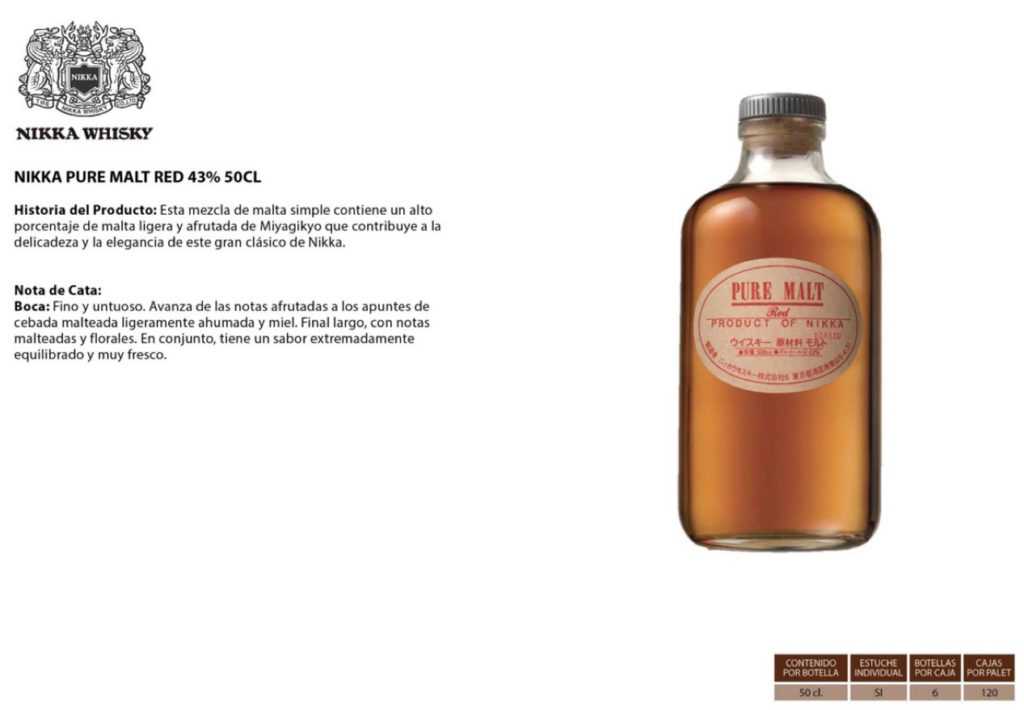

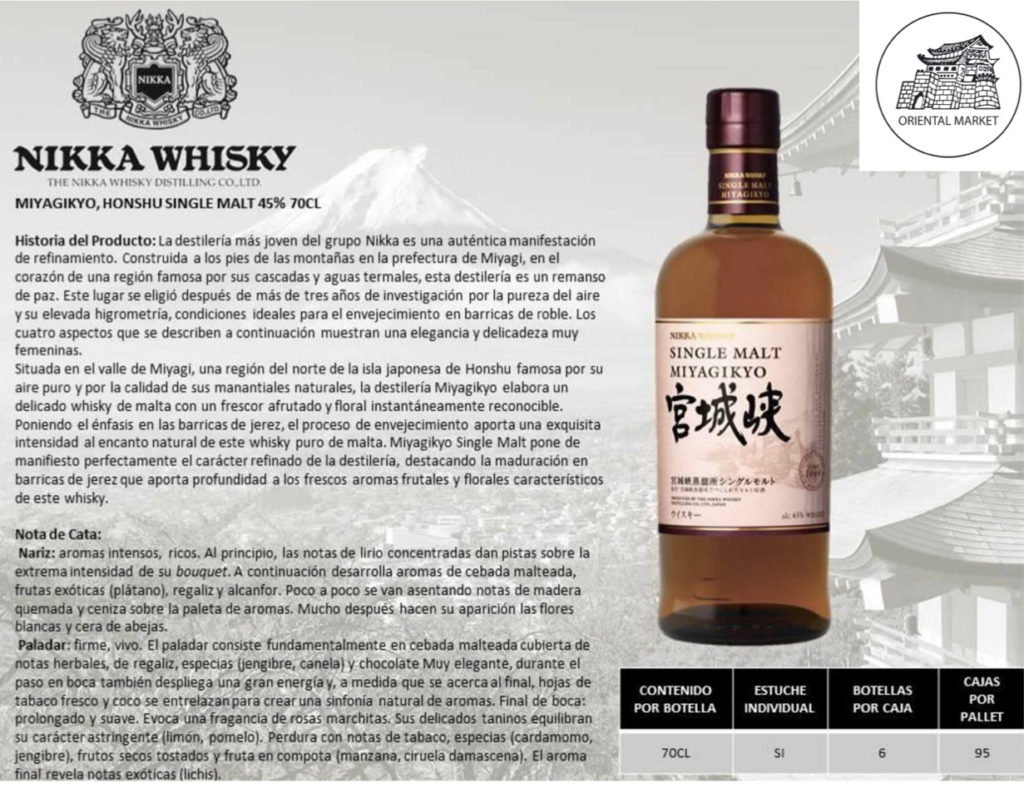

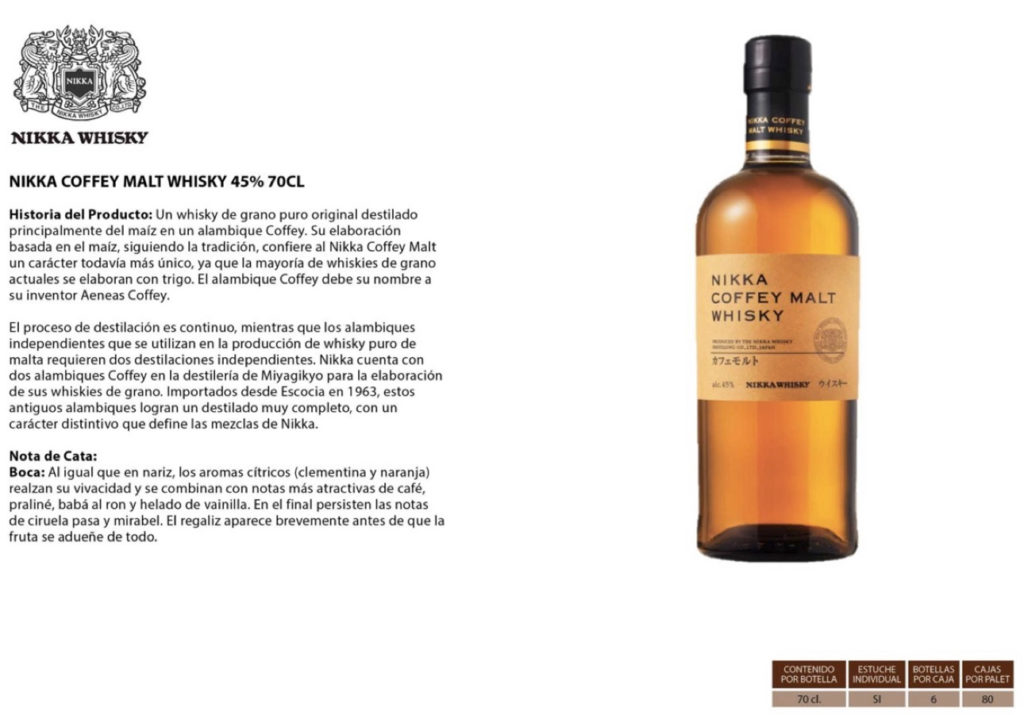
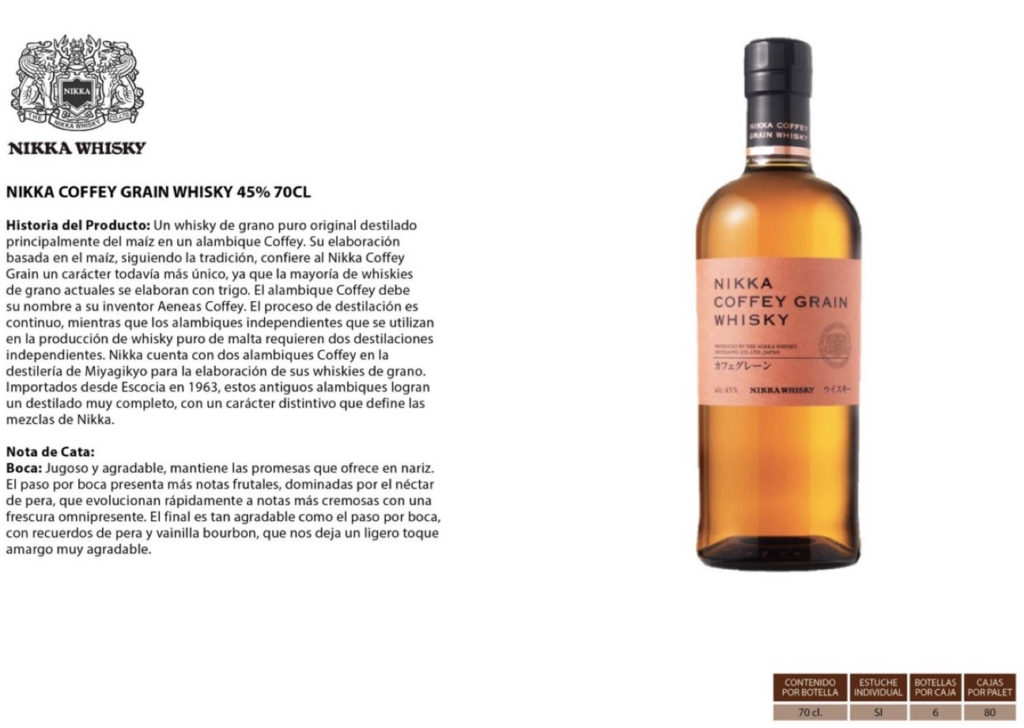
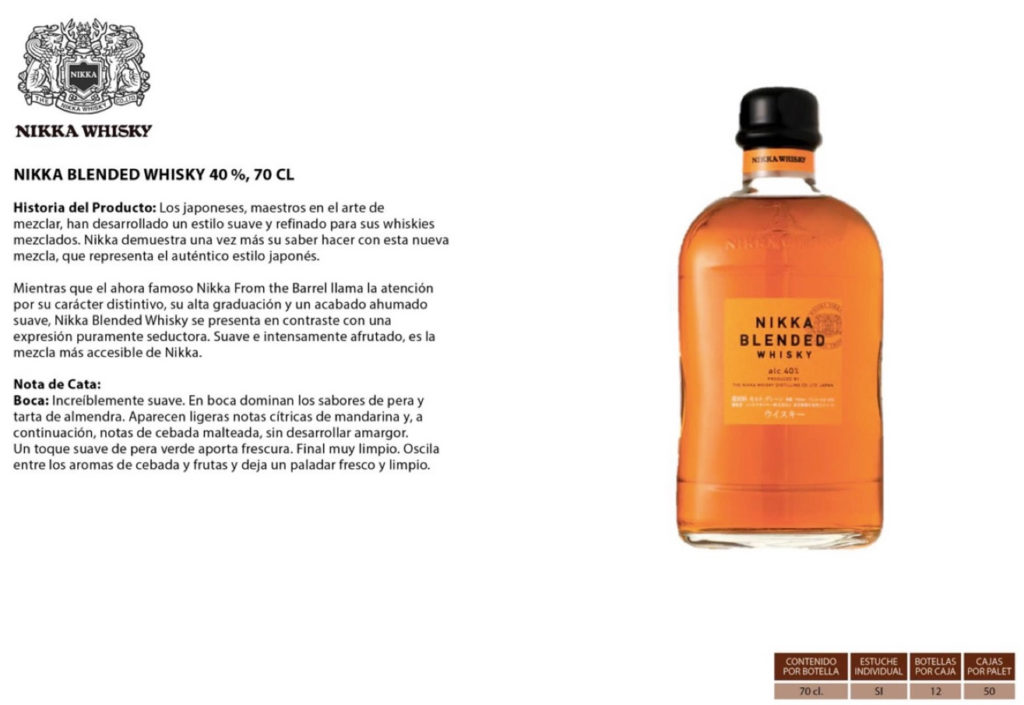
Hondashi, the fish stock powder
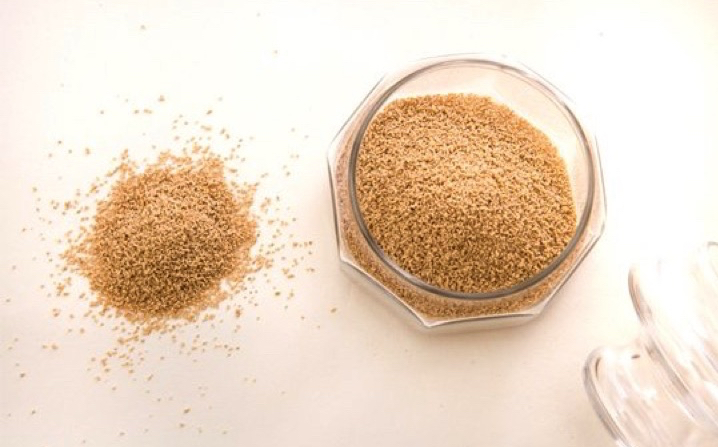
Before defining the word “Hondashi”, we will explain the word “dashi”. It is known as “dashi” to the essential broth of Japanese cuisine, a base broth for many of the recipes of oriental gastronomy that requires its flavour for the best dishes. A starting point for cooking star recipes such as oriental noodles or miso soup. Its star ingredient? Kombu seaweed. This type of laminated seaweed can be found dried, as pressed leaves, or fresh (as sashimi). However, this is not the only ingredient…
In addition to kombu seaweed, we can find other varieties based on dried bonito or shiitake mushrooms (for more vegetarians). Now that we are clearer about what dashi is, what is hondashi? Well, following the origin of the word, it is this instant powdered broth (a marvel of modernity). You can find hondashi in different formats in our online shop, visit it!
If you want to enjoy this condiment, here is an excellent recipe:
Sea Broth with Udon and roasted fruits.
Ingredients
- 200 gr. of udon noodles.
- 250 gr. of prawns
- 25 g dried wakame.
- 1 teaspoon of hondashi
- 1 green pepper
- 1 red pepper
- 1 spring onion
- 2 spring onion stalks.
- 2 pears
- 2 apples
- 4 tablespoons soy sauce
- 2 litres of water
- Sesame oil
- Olive oil
- Salt
- Pepper
- 1 teaspoon of toasted sesame seeds.
Preparation:
Wash the pears and apples and place them in an ovenproof dish. Bake at 180º C for 20 minutes. Set aside. To make the stock, peel the prawns, set aside on a plate and place the shells in a large pan. Add the hondashi, chopped wakame seaweed, 1 tbsp sesame oil and soy sauce soy sauce. Cook for 10 minutes. Strain the stock, skim and return to the heat. When it comes to the boil, add the udon and cook for 5-8 minutes. Season with salt and pepper. Set aside.
Cut the spring onion, green and red pepper into julienne strips and sauté them in a frying pan with a little oil. Season and add the prawns. Sauté briefly. Put the vegetables in the bottom of the dish, place the noodles on top and pour in the stock. Finely chop the spring onion stalks and sprinkle over the soup. Sprinkle with a little toasted sesame seeds. Serve with the roasted fruit.
Dorayaki: Do you know the most popular Japanese sweet?

It is called “dorayaki” and many fans of the famous cartoon series “Doraemon” know it as the favourite sweet of this curious cosmic cat. Undoubtedly, a sweet that stands out for its shape, its taste and its multiple combinations of flavours, becoming today the most fashionable snack not only in the East but also in the West. At Oriental Market we are pleased to present our new Dorayaki range of flavours, you will want to try them all!
Dorayaki is very easy to describe. It is a sweet cake made of two round biscuits (this type of bread is called “kasutera”, a shape invented in 1915 by Ueno Usagiya) that usually includes anko (a spice of sweet red bean) and chocolate as filling, but in the last few months it has been renewed with many new flavours. Originally dorayaki had only one layer and was usually eaten with tea. But what other flavours can be found as filling for dorayaki?
Types of Dorayaki that we have in our Oriental Market shop

-
- Lemon and cheesecake Dorayaki: a perfect dorayaki for cheesecake lovers. It features the perfect combination of the sweetness of the sponge cake with the acidity of the lemon.
- Chocolate Dorayaki:: the favourite variety for chocoholics. A dumpling filled with intense chocolate and excellent creaminess.
- Dorayaki de crema y té verde: a traditional Japanese sweet that includes the flavour of one of Asia’s most popular herbal teas. The flavour of premium quality powdered green tea stands out. There is also a second variety with green tea, the green tea and mascarpone Dorayaki.
- Cream and strawberry Dorayaki: for lovers of this delicious fruit, this fruity dorayaki has a texture similar to that of strawberry jam.
- And finally, the most traditional dorayaki in this Oriental Market series, the Red been Dorayaki: to which we have added an innovative touch, cheesecake.
Remember, each dorayaki weighs 75 grams and contains milk, wheat flour, egg and may contain: soy, sesame seeds, peanuts and mustard. If you are not allergic to any of these ingredients, our recommendation is that you try each of them and tell us, which flavour do you like best?
A curiosity: A Japanese legend tells that the first dorayaki was made when a samurai called Benkei forgot his gong (dora) after leaving a peasant’s house where he was hiding and the peasant subsequently used the gong to fry the fritters, hence the name Dorayaki.




